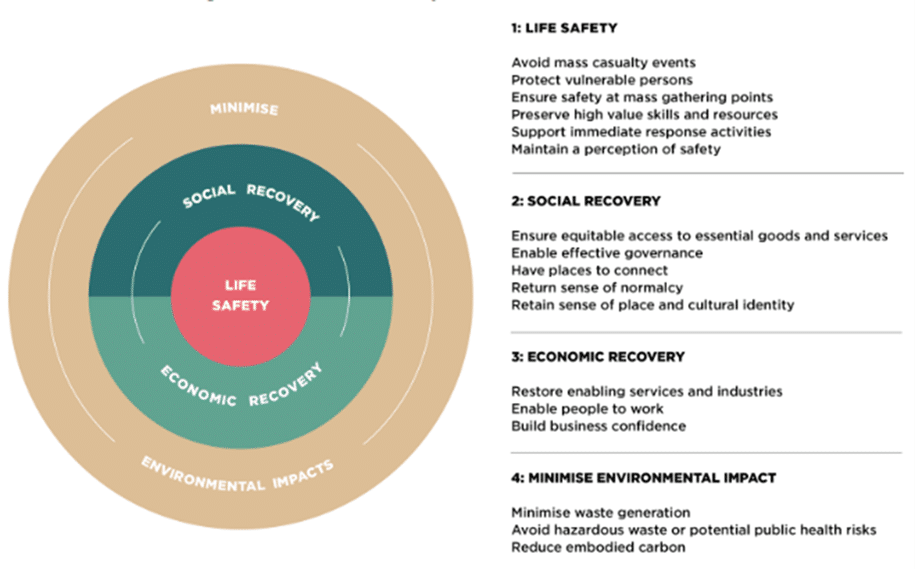Property Council’s South Island Regional Committee member, Louise Tucker, shares her views on the recent Building Resilience Project outcomes.
Following on from Doran Wyatt’s PCNZ “Opinion: Major Changes to Seismic Standards” in March 2024 regarding the draft seismic design standard release which generally presents an increase in the seismic hazard across New Zealand, a recent Resilient Buildings Project, funded by the Earthquake Commission (EQC) and the New Zealand Society for Earthquake Engineering (NZSEE), articulates a timely and better understanding of what New Zealanders want from the seismic performance of our buildings stock.
The research project also provides a greater understanding of much-needed changes to seismic engineering, building practices and the current regulatory regime for improved infrastructure and community resilience, given our advanced knowledge of the seismic hazard around Aotearoa and recent significant losses from seismic activity.
Our increased knowledge of seismic hazard and the impact of events
From the Christchurch and Kaikoura earthquake events and their aftermath, there is a greater general knowledge about the seismic hazard that exists across Aotearoa and with it, a changing tolerance to seismic risk. The lived experience of the wide-ranging impacts of recent seismic events has increased awareness around life safety, property damage and business continuity. The events displaced people and businesses, thousands of buildings were destroyed and rebuilt, and direct property costs were considerable. Significant indirect costs from the recovery’s long tail continue to impact our natural environment, well-being and economic progress. Alongside New Zealanders’ increased knowledge and experience, the insurance market’s disaster-risk insurance pricing and availability can be challenging for building owners and occupiers. Both societal and insurance changes lead to a desire for improved building performance and resilience, driving enhanced engineering design and retrofit of buildings.
The Resilient Buildings Project findings
The three-year Resilient Buildings Project is the culmination of feedback from interviews and focus groups using a well-being/multi-capital framework to explore the expectations of building performance during and after an earthquake event. The project also provides a policy framework tool to support engineers and designers align to these expectations.
The findings unsurprisingly noted that life safety is a non-negotiable expectation – buildings must perform, especially for the most vulnerable. We have obligations as PCBUs under the Health and Safety at Work Act 2015 to provide safe buildings in the design, construction, operation and maintenance activities we perform in the building sector, and we need to address this as a primary consideration. Additionally, social and economic recovery is also important beyond buildings just staying standing after an earthquake event. People want to be back living and working in impacted buildings quickly after an event, and some building types were recommended to have greater priority for recovery, including hospitals, aged care, marae, community centres and housing, which currently aren’t prioritised.

Figure: What do New Zealanders want from their buildings. (Brown, March 2022)
Source: Brown, C Abeling, S, Horsfall, S, Ferner, H, Cowan H, (2022) The Resilient Buildings Project, NZSEE, March 2022.
The focus for building development
The current uncertainty around government policy, planning and seismic building regulation, construction cost escalation, and insurance market changes make for a challenging backdrop for new building development to include enhanced protection of people from injury, protection of property from damage and protection of amenity and functionality. The Building Resilience Framework aims to support the development of more resilient buildings without raising building costs to an uneconomic level and minimising the potential for damage or loss, which makes good economic and social sense. Other aspects to focus on include the potential for:
- Added value for owners and tenants that are more vulnerable to or less tolerant of disruption (i.e. supermarkets, residential apartments) in their operations and activities
- Accessibility and affordability of a range of insurance
- The property’s market value and desirability for owners and tenants to have a reduced risk of loss or disruption
- Building’s durability and environmental benefits of reducing building waste from damage and repair/rebuild cycles.
- Other non-monetary/co-benefits of designing and constructing buildings for increased resilience in seismic events can also be climate change mitigation, whole of life, sustainability and staff and community wellbeing.
Recommendations for new building development
One of the key objectives of EQC is to promote the development of more robust buildings on better land and the design and construction of resilient new building development will need to consider more than conformance to current codes and standards. The Resilient Buildings Project report noted evidence that the cost of increasing seismic resilience in new buildings can be very low. The observations were that the costs of construction could be considerably lower in Wellington than in Auckland for the same building form and type despite the seismic hazard in Wellington being three times greater. Some “back to basics” principles could also provide enhanced underlying protection to people, property, function and amenities. These could include:
- Building on good ground – do your due diligence on the site and surrounding areas to understand if underlying geotechnical conditions and risk factors exist, such as soft deep soils, proximity to slopes with a history of instability or liquefaction potential. While engineering improvements can be made to land with these challenges, remedying them to an acceptable risk mitigation level may be costly, and the underlying hazards may deter potential owners and tenants with a lower tolerance for risk
- Focusing on simpler more regular building forms – buildings with a simple footprint and vertical regularity respond to seismic events in more predictable ways and avoid structural load paths that do “engineering gymnastics” to carry the inertia load to the building’s foundations, examples of more complex load paths are buildings with transfer diaphragms or soft story arrangements
- Building using new innovations—consider using structural materials and technologies that reduce the building’s mass, improve the performance of non-structural elements or materials that can be replaced and repaired more easily in the event of damage.
- Avoiding vulnerable elements – some cladding systems, such as brick veneers, can be more vulnerable to damage than other systems. Buildings with poorly coordinated and unrestrained contents and building services can lead to secondary damage post shaking, such as water damage from ruptured pipes or fittings, rendering the building unable to be occupied.
Photo by Kishan Modi on Unsplash
Louise Tucker
Area Manager, South Island, AECOM
Louise is based in Christchurch, New Zealand. She is a chartered consulting engineer with a background in the buildings and transport sectors and has a passionate interest in sustainable and resilient infrastructure. After 13 years in Melbourne Australia, she returned to Christchurch in 2021. While in Melbourne she worked on major rail projects including the Melbourne Metro tunnel project. The experience gained was invaluable to her current role leading the South Island operations for AECOM, engaging with a variety of clients across the energy, environment, transport, water and built environment sectors.


